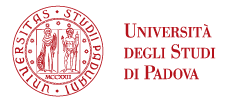Experimental papers
Kramer, P., Bressan, P., & Grassi, M. (2018). The SNARC effect is associated with worse mathematical intelligence and poorer time estimation. Royal Society Open Science, 5, 172362.
Bressan, P., & Kramer, P. (2013). The relation between cognitive-perceptual schizotypal traits and the Ebbinghaus size-illusion is mediated by judgment time. Frontiers in Psychology, 4: 343, 1-8.
Kramer, P., Massaccesi, S., Semenzato, L., Cecchetto, S., & Bressan, P. (2013). Motion-induced blindness measured objectively. Behavior Research Methods, 45(1), 267-271.
Bressan, P., & Dal Pos, S. (2012). Fathers see stronger family resemblances than non-fathers in unrelated children’s faces. Archives of Sexual Behavior, 41, 1423-1430.
Kramer, P., Bressan, P., & Grassi, M. (2011). Time estimation predicts mathematical intelligence. PLoS ONE, 6(12): e28621.
Kramer, P., Di Bono, M. G., & Zorzi M. (2011). Numerosity estimation in visual stimuli in the absence of luminance-based cues. PLoS ONE, 6(2): e17378.
Kramer, P., Stoianov I., Umiltà C., & Zorzi M. (2011). Interactions between perceptual and numerical space. Psychonomic Bulletin & Review, 18, 722-728.
Cecchetto, S. & Kramer, P. (2010). Forcing free fusion of stereograms. Perception, 39, 133-135.
Hsu, L.-C., Kramer, P., & Yeh, S.-L. (2010). Monocular depth effects on perceptual fading. Vision Research, 50, 1649-1655.
Kramer, P., & Bressan, P. (2010). Paradoxical lightness contrast. Vision Research, 50, 144-148.
Bressan, P., & Zucchi, G. (2009). Human kin recognition is self- rather than family-referential. Biology Letters, 5, 336-338.
read coverage in the Telegraph ("We are friendlier to people who resemble us, scientists find", 4 March 2009)
read coverage in Focus ("Je ähnlicher, desto hilfsbereiter", 4 March 2009)
read coverage in Stern ("Gleich und gleich hilft sich gern", 4 March 2009)
read coverage in Wissenschaft ("Das eigene Gesicht als unbewusster Standard", 4 March 2009)
Bressan, P., Colarelli, S. M., & Cavalieri, M. B. (2009). Biologically costly altruism depends on emotional closeness among step but not half or full siblings. Evolutionary Psychology, 7, 118-132.
Bressan, P., Bertamini, M., Nalli, A., & Zanutto, A. (2009). Men do not have a stronger preference than women for self-resemblant child faces. Archives of Sexual Behavior, 38, 657-664.
Bressan, P., Kramer, P., & Germani, M. (2008). Visual attentional capture predicts belief in a meaningful world. Cortex, 44, 1299-1306.
Pizzighello, S., & Bressan, P. (2008). Auditory attention causes visual inattentional blindness. Perception, 37, 859-866.
Bressan, P., & Kramer, P. (2008). Gating of remote effects on lightness. Journal of Vision, 8(2):16, 1-8.
Bressan, P., & Stranieri, D. (2008). The best men are (not always) already taken: Female preference for single versus attached males depends on conception risk. Psychological Science, 19, 145-151.
read coverage in Nature ("Fertile wives find single men sexy", 26 February 2008)
Bressan, P., & Pizzighello, S. (2008). The attentional cost of inattentional blindness. Cognition, 106, 370-383.
Stoianov, I., Kramer, P., Umiltà C., & Zorzi, M. (2008). Visuospatial priming of the mental number line. Cognition, 106, 770-779.
Bressan, P., & Actis-Grosso, R. (2006). Simultaneous lightness contrast on plain and articulated surrounds. Perception, 35, 445-452.
Hsu, L.-H., Yeh, S.-L., & Kramer, P. (2006). A common mechanism for perceptual filling-in and motion-induced blindness. Vision Research, 46, 1973-1981.
Bressan, P., & Grassi, M. (2004). Parental resemblance in one-year-olds and the Gaussian curve. Evolution and Human Behavior, 25, 133-141.
Hsu, L.-H., Yeh, S.-L., & Kramer, P. (2004). Linking motion-induced blindness to perceptual filling-in. Vision Research, 44, 2857-2866.
Bressan, P., Garlaschelli, L., & Barracano, M. (2003). Antigravity hills are visual illusions. Psychological Science, 14, 441-449.
Da Pos, O., & Bressan, P. (2003). Chromatic induction in neon colour spreading. Vision Research, 43, 697-706.
Bressan, P., & Dal Martello, M.F. (2002). Talis pater, talis filius: perceived resemblance and the belief in genetic relatedness. Psychological Science, 13, 213-218.
Bressan, P. (2002). The connection between random sequences, everyday coincidences, and belief in the paranormal. Applied Cognitive Psychology, 16, 17-34.
Rose, D., & Bressan, P. (2002). Going round in circles: shape effects in the Ebbinghaus illusion. Spatial Vision, 15, 191-203.
Bressan, P. (2001). Explaining lightness illusions. Perception, 30, 1031-1046.
Bressan, P., & Actis-Grosso, R. (2001). Simultaneous lightness contrast with double increments. Perception, 30, 889-897.
Vezzani, S., & Bressan, P. (1999). The barberpole illusion depends on contrast. Ricerche di Psicologia, 23, 69-81.
Kramer, P. & Rudd, M. E. (1999). Visible persistence and form correspondence in Ternus apparent motion. Perception & Psychophysics, 61, 952-962.
Kramer, P. & Yantis S. (1997). Perceptual grouping in space and time: evidence from the Ternus display. Perception & Psychophysics, 59, 87-99.
Bressan, P. & Vezzani, S. (1995). A new motion illusion related to the aperture problem. Perception, 24, 1165-1176.
Tommasi, L., Bressan, P. & Vallortigara, G. (1995). Solving occlusion indeterminacy in chromatically homogeneous patterns. Perception, 24, 391-403.
Bressan, P. (1995). A closer look at the dependence of neon color spreading on wavelength and illuminance. Vision Research, 35, 375-379.
Vallortigara, G. & Bressan, P. (1994). Occlusion, transparency, and stereopsis: a new explanation for stereocapture. Vision Research, 34, 2891-2896.
Bressan, P. & Vallortigara, G. (1993). What induces capture in motion capture? Vision Research, 33, 2109-2112.
Bressan, P. (1993). Revisitation of the luminance conditions for the occurrence of the achromatic neon color spreading illusion. Perception & Psychophysics, 54, 55-64.
Bressan, P. (1993). Neon color spreading with and without its figural prerequisites. Perception, 22, 353-361.
Bressan, P., Ganis, G. & Vallortigara, G. (1993). The role of depth stratification in the solution of the aperture problem. Perception, 22 , 215-228.
Bressan, P., Tomat, L. & Vallortigara, G. (1992). Motion aftereffects with rotating ellipses. Psychological Research, 54, 240-245.
Bressan, P. & Vallortigara, G. (1991). Illusory depth from moving subjective figures and neon color spreading. Perception, 20, 637-644.
Vallortigara, G. & Bressan, P. (1991). Occlusion and the perception of coherent motion. Vision Research, 31, 1967-1978.
Bressan, P. (1991). A context-dependent illusion in the perception of velocity. Vision Research, 31, 333-336.
Todd, J.T. & Bressan, P. (1990). The perception of 3-dimensional affine structure from minimal apparent motion sequences. Perception & Psychophysics, 48, 419-430.
Vicario, G.B. & Bressan, P. (1990). Wheels: a new illusion in the perception of rolling objects. Perception, 19, 57-61.
La Heij, W., Dirkx, J., & Kramer, P. (1990). Categorical interference and associative priming in picture naming. British Journal of Psychology, 81, 511-525.
Vallortigara, G., Bressan, P. & Bertamini, M. (1988). Perceptual alternations in stereokinesis. Perception, 17, 31-34.
Bressan, P. (1987). Vicario’s illusion of sloping steps reexamined. Perception, 16, 671-675.
Bressan, P. (1987). Subjective rarefaction in illusory figures: the inadequacy of apparent lightness as an explanation. Perception, 16, 461-466.
Bressan, P. & Vallortigara, G. (1987). Learning to see stereokinetic effects. Perception, 16, 187-192.
Bressan, P. & Vallortigara, G. (1987). Stereokinesis with moving visual phantoms. Perception, 16, 73-78.
Bressan, P. & Vallortigara, G. (1986). Subjective contours can produce stereokinetic effects. Perception, 15, 409-412.
Bressan, P. & Vallortigara, G. (1986). Multiple 3-D interpretations in a classic stereokinetic effect. Perception, 15, 405-408.
Vallortigara, G., Bressan, P. & Zanforlin, M. (1986). The Saturn illusion: a new stereokinetic effect. Vision Research, 26, 811-813.
Bressan, P., Masin, S.C., Vicario, G. & Vidotto, G. (1985). A functional-measurement study of apparent rarefaction. Bulletin of the Psychonomic Society, 23, 415-417.
Bressan, P. (1985). Revisitation of the family tie between Münsterberg and Taylor-Woodhouse illusions. Perception, 14, 579-585.
Bressan, P. & Vicario, G.B. (1984). On misoriented letters. Perception, 13, 687-694.





